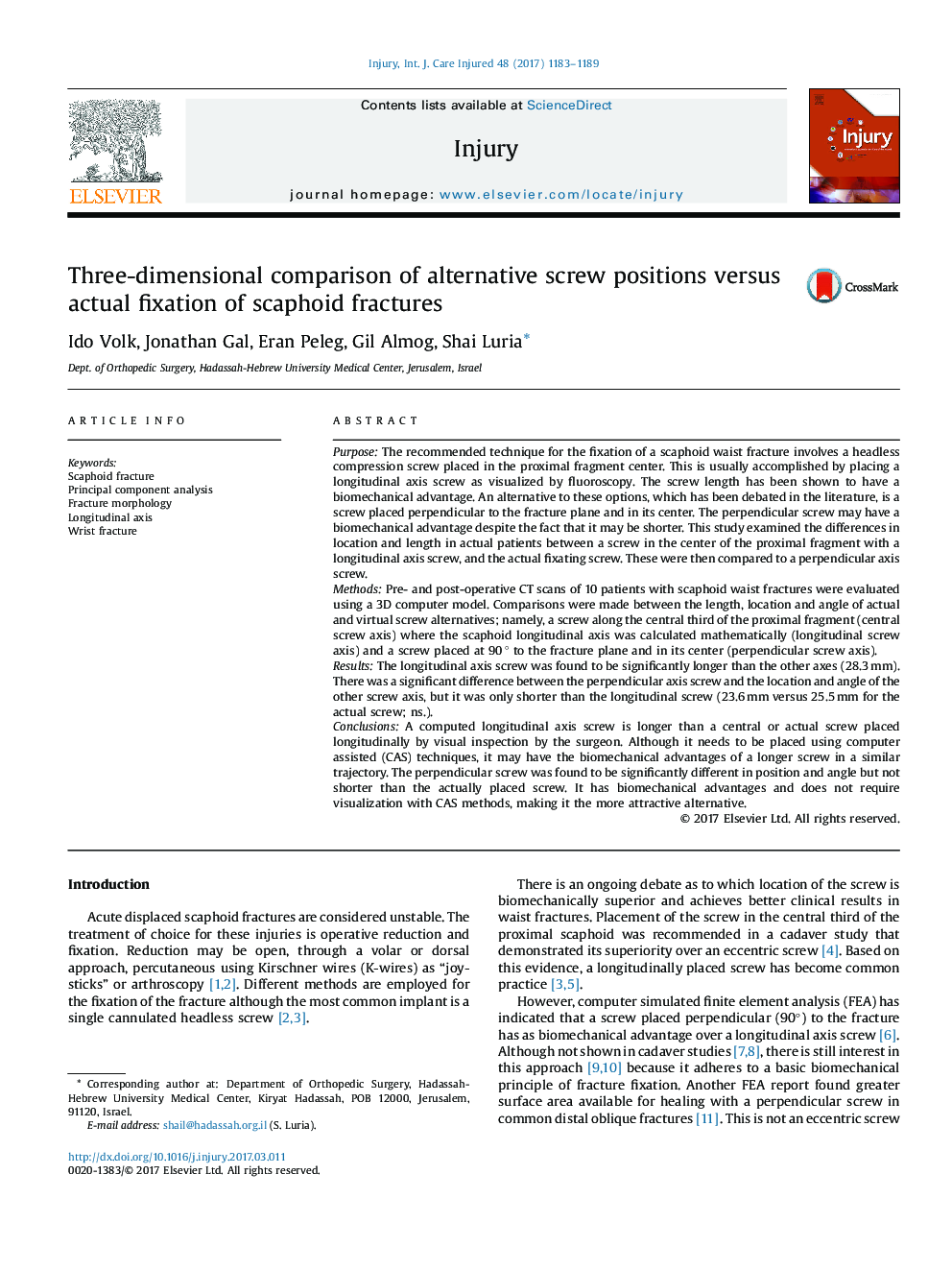| Article ID | Journal | Published Year | Pages | File Type |
|---|---|---|---|---|
| 5652492 | Injury | 2017 | 7 Pages |
PurposeThe recommended technique for the fixation of a scaphoid waist fracture involves a headless compression screw placed in the proximal fragment center. This is usually accomplished by placing a longitudinal axis screw as visualized by fluoroscopy. The screw length has been shown to have a biomechanical advantage. An alternative to these options, which has been debated in the literature, is a screw placed perpendicular to the fracture plane and in its center. The perpendicular screw may have a biomechanical advantage despite the fact that it may be shorter. This study examined the differences in location and length in actual patients between a screw in the center of the proximal fragment with a longitudinal axis screw, and the actual fixating screw. These were then compared to a perpendicular axis screw.MethodsPre- and post-operative CT scans of 10 patients with scaphoid waist fractures were evaluated using a 3D computer model. Comparisons were made between the length, location and angle of actual and virtual screw alternatives; namely, a screw along the central third of the proximal fragment (central screw axis) where the scaphoid longitudinal axis was calculated mathematically (longitudinal screw axis) and a screw placed at 90 ° to the fracture plane and in its center (perpendicular screw axis).ResultsThe longitudinal axis screw was found to be significantly longer than the other axes (28.3 mm). There was a significant difference between the perpendicular axis screw and the location and angle of the other screw axis, but it was only shorter than the longitudinal screw (23.6 mm versus 25.5 mm for the actual screw; ns.).ConclusionsA computed longitudinal axis screw is longer than a central or actual screw placed longitudinally by visual inspection by the surgeon. Although it needs to be placed using computer assisted (CAS) techniques, it may have the biomechanical advantages of a longer screw in a similar trajectory. The perpendicular screw was found to be significantly different in position and angle but not shorter than the actually placed screw. It has biomechanical advantages and does not require visualization with CAS methods, making it the more attractive alternative.
